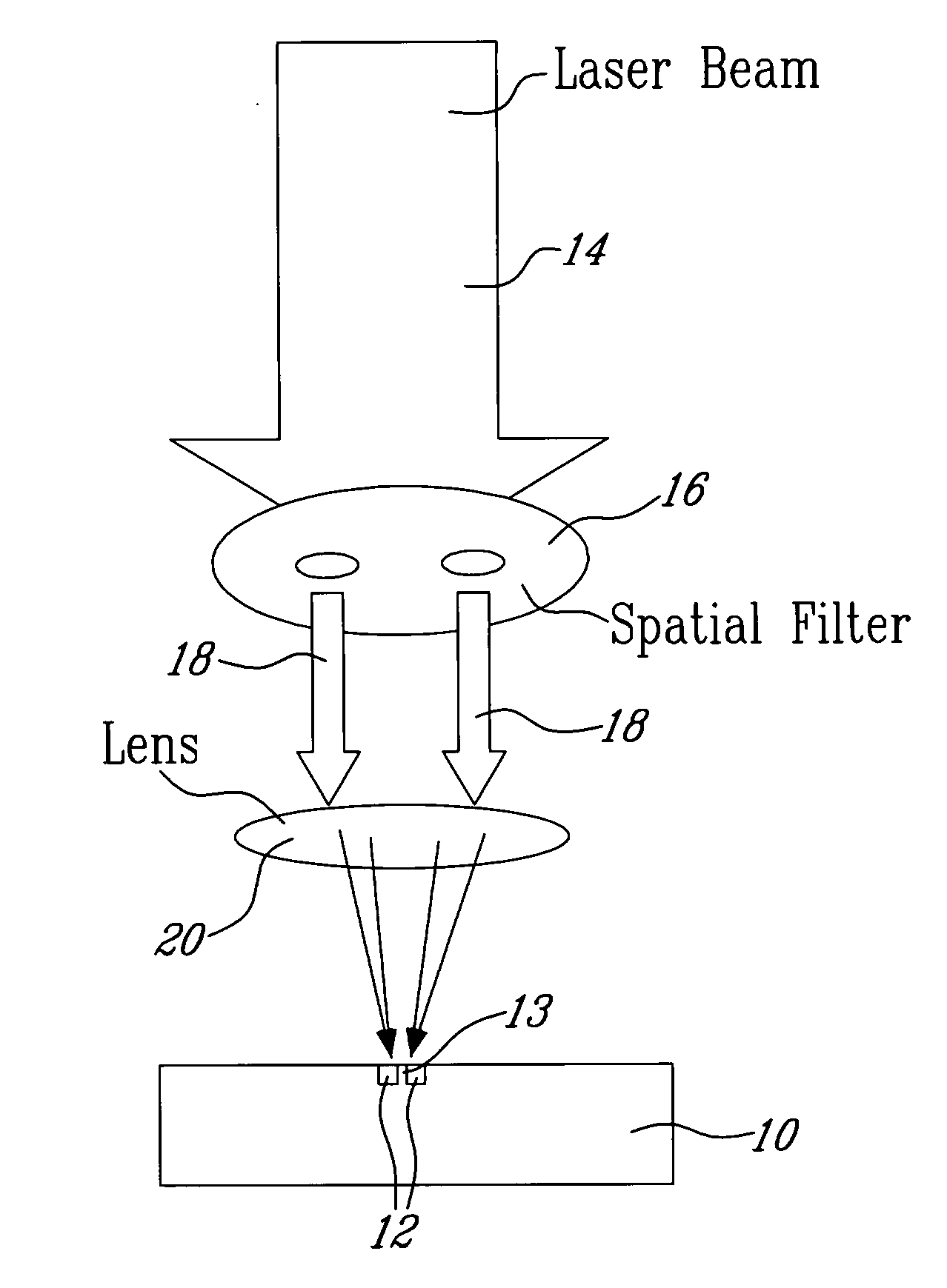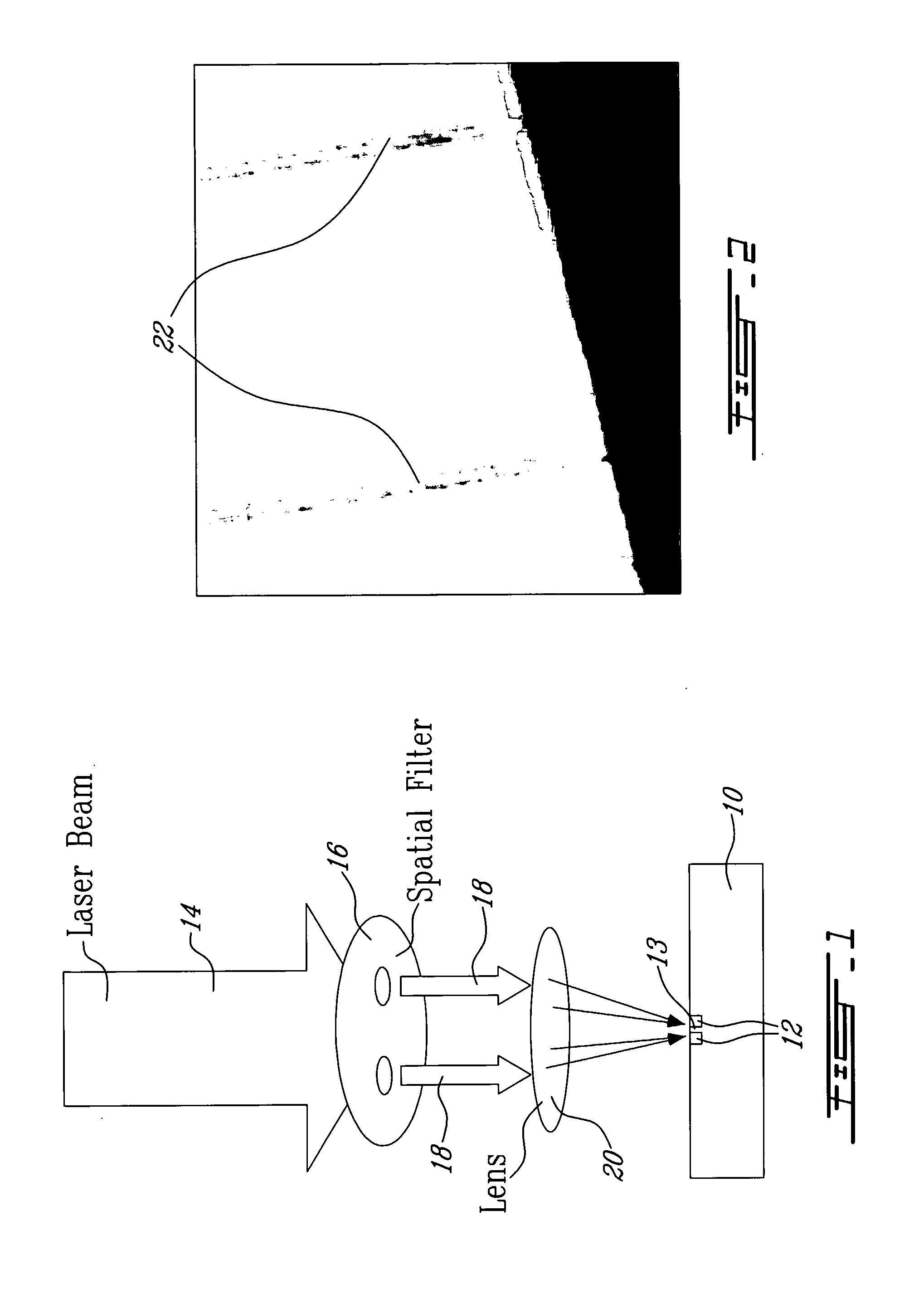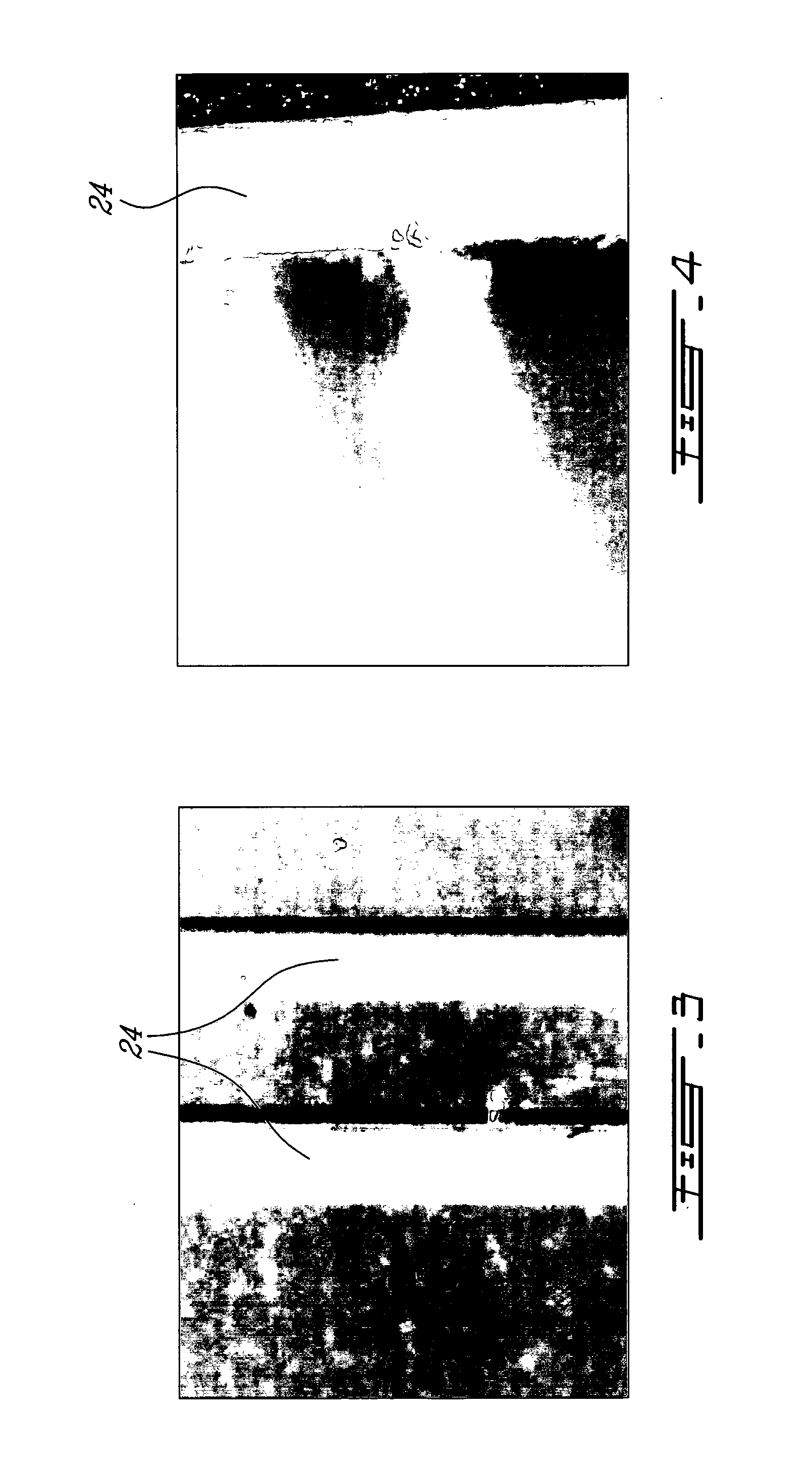Process for Fabricating Optical Waveguides
a technology of optical waveguides and fabrication processes, applied in the field of optical waveguides, can solve the problems of failure to meet expectations on the basis of cost, low yield and expensive products, and produces devices with moderate insertion loss, and achieve the effect of improving the process for fabricating optical waveguides
- Summary
- Abstract
- Description
- Claims
- Application Information
AI Technical Summary
Benefits of technology
Problems solved by technology
Method used
Image
Examples
Embodiment Construction
[0042]A process and system for fabricating planar waveguides according to a first illustrated embodiment of the present invention will now be described with reference to FIG. 1.
[0043]A high power laser, for example of the CO2 type (not shown), is used to cut into a substrate material in our current embodiment in the form of a glass plate 10, two substantially parallel channels 12, defining a ridge waveguide 13 there between.
[0044]It is to be noted that the substrate material may be a metal, a semiconductor or a dielectric.
[0045]More specifically, the CO2 laser produces a beam 14 of a 10.6 micron wavelength which is split through a spatial filter 16 producing two parallel beams 18 that are focused through a lens 20 onto the surface of the substrate 10. It is believed to be within the reach of a person skilled in the art to adequately select the spatial filter 16 and lens 20 so as to yield a desired distance between the two channels 12. Of course the dimensions of the two channels 12 ...
PUM
| Property | Measurement | Unit |
|---|---|---|
| Temperature | aaaaa | aaaaa |
| Dielectric polarization enthalpy | aaaaa | aaaaa |
| Power | aaaaa | aaaaa |
Abstract
Description
Claims
Application Information
 Login to View More
Login to View More - R&D
- Intellectual Property
- Life Sciences
- Materials
- Tech Scout
- Unparalleled Data Quality
- Higher Quality Content
- 60% Fewer Hallucinations
Browse by: Latest US Patents, China's latest patents, Technical Efficacy Thesaurus, Application Domain, Technology Topic, Popular Technical Reports.
© 2025 PatSnap. All rights reserved.Legal|Privacy policy|Modern Slavery Act Transparency Statement|Sitemap|About US| Contact US: help@patsnap.com



